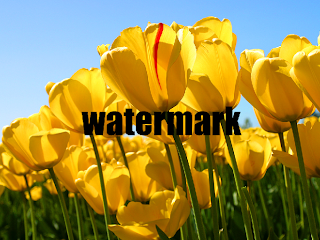Those who have a PC a bit old as mine and incapable of loading a graphic card and other add-ons or plug-ins for their Photoshop program, aiming for a 3D rendering project can be frustrating and one can really feel so helpless. For text effect and typography though, one can do the job with little creativeness and learning from other graphic designers.
In this tutorial, you'll be able to learn how to make a simple 3D text effect. From here, after going through the steps, you can already create actually a more beautiful 3D text, like applying perspectives, distorts, font designs or typography,layer styles, and more which you can call it your own!
What we are going to make
Step 1. Choosing your background
Since we are creating a gold text, it is therefore more effective to use a contrasting color. For,this, you can use black or other dark colors, and white or nearly similar light color. In this tutorial, I used black.Step 2. Type the text
Choose a font that is bold, serif or sans serif, then type the text that you want. I used a Century Gothic here, size 100, and set to Crisp anti-aliasing method. Color is #be9227. When done, rasterize type to enable the layer for further editing.Step 3. Make a 3D effect
With the text layer active, click the Move Tool icon, then press and hold Alt key while pressing the Up and Down arrow keys each. Do this 18 times (or 9 pairs). Highlight all these copies (except the original), then merge layers.Step 4. Apply layer styles
Press Ctrl and click the merged text layer icon to select, then apply Gradient Overlay. Press Ctrl+D to deselect when done. To reveal the 3D text, drag this layer (merged text) below the original text layer. Here's how it should look now:Step 5. Final touches
To make the text standout even more, apply Stroke to the original text layer, size 1 and spread to about 3. And to enhance the glow effect, we have to make a reflection of the text. To do this, merge the 2 text layers first, duplicate it, then with the duplicate layer active, go to Edit>Transform>Flip vertical...Drag the text below the original (or you may use the Down Arrow key to move it down) like the one shown below.
Grab your Rectangular Marquee Tool, make a selection that covers half of the whole image, making sure it reaches till the bottom of the original text. Now, with the use of a round soft brush in low opacity, brush off the bottom part with the upper part hardly visible. An alternative way to do this is to apply a gradient overlay of black and white shade. Or, you may also apply layer mask then erase parts by a soft black brush.
And to finish it off, try to make another background, like a brushed metal maybe, or anything you wish to apply other than your black background. Here, I used a carbon BG.


























































